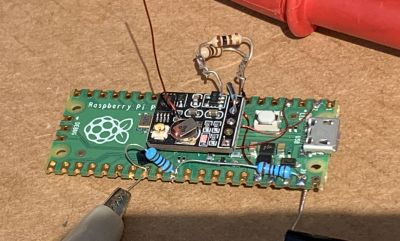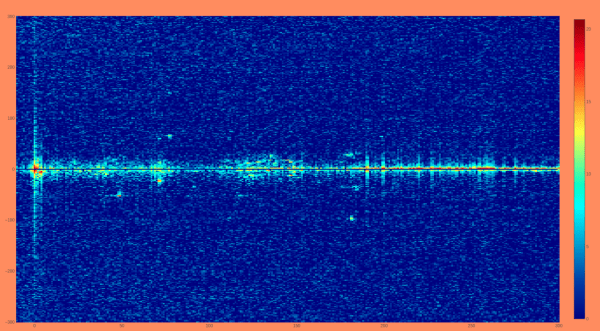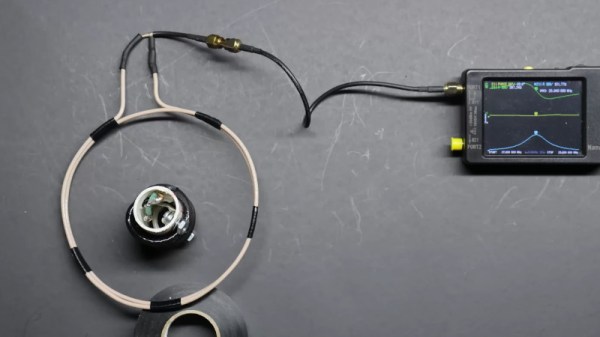We’ve been harping a lot lately about the effort by carmakers to kill off AM radio, ostensibly because making EVs that don’t emit enough electromagnetic interference to swamp broadcast signals is a practical impossibility. In the US, push-back from lawmakers — no doubt spurred by radio industry lobbyists — has put the brakes on the move a bit, on the understandable grounds that an entire emergency communication system largely centered around AM radio has been in place for the last seven decades or so. Not so in Japan, though, as thirteen of the nation’s 47 broadcasters have voluntarily shut down their AM transmitters in what’s billed as an “impact study” by the Ministry of Internal Affairs and Communications. The request for the study actually came from the broadcasters, with one being quoted in a hearing on the matter as “hop[ing] that AM broadcasting will be promptly discontinued.” So the writing is apparently on the wall for AM radio in Japan.
radio564 Articles
Grid Leak Radio Draws The Waves
[Stephen McNamera] found a schematic for a grid leak radio online and decided to throw together a few tubes on a piece of wood and see how it worked. As you can see in the video below, it works well. The video is a bit light on details, but the web page he found the plans on also has quite a bit of explanation.
The name “grid leak detector” is due to the grid leak resistor between the grid and ground, in this case, a 2.7 megaohm resistor. The first tube does everything, including AM detection. The second tube is just an audio amplifier that drives the speaker. This demodulation method relies on the cathode to control grid conduction characteristics and was found in radios up to about the 1930s. The control grid performs the usual function but also acts as a diode with the cathode, providing demodulation. In a way, this is similar to a crystal radio but with an amplified tube diode instead of a crystal.
It looks like [Stephen] wound his own coil, and the variable capacitor looks suspiciously like it may have come from an old AM radio. The of the old screw terminal tube sockets on the wood board looks great. Breadboard indeed! What we didn’t see is where the 150 V plate voltage comes from. You hope there is a transformer somewhere and some filter capacitors. Or, perhaps he has a high-voltage supply on the bench.
While tubes are technologically passe, we still like them. Especially in old radios. Just take care around the high voltages, please.
DIY Passive Radar System Verifies ADS-B Transmissions
Like most waves in the electromagnetic spectrum, radio waves tend to bounce off of various objects. This can be frustrating to anyone trying to use something like a GMRS or LoRa radio in a dense city, for example, but these reflections can also be exploited for productive use as well, most famously by radar. Radar has plenty of applications such as weather forecasting and various military uses. With some software-defined radio tools, it’s also possible to use radar for tracking aircraft in real-time at home like this DIY radar system.
Unlike active radar systems which use a specific radio source to look for reflections, this system is a passive radar system that uses radio waves already present in the environment to track objects. A reference antenna is used to listen to the target frequency, and in this installation, a nine-element Yagi antenna is configured to listen for reflections. The radio waves that each antenna hears are sent through a computer program that compares the two to identify the reflections of the reference radio signal heard by the Yagi.
Even though a system like this doesn’t include any high-powered active elements, it still takes a considerable chunk of computing resources and some skill to identify the data presented by the software. [Nathan] aka [30hours] gives a fairly thorough overview of the system which can even recognize helicopters from other types of aircraft, and also uses the ADS-B monitoring system as a sanity check. Radar can be used to monitor other vehicles as well, like this 24 GHz radar module found in some modern passenger vehicles.
Continue reading “DIY Passive Radar System Verifies ADS-B Transmissions”
WSPR To The Wind With A Pi Pico High Altitiude Balloon
They say that if you love something, you should set it free. That doesn’t mean that you should spend any more on it than you have to though, which is why [EngineerGuy314] put together this Raspberry Pi Pico high-altitude balloon tracker that should only set you back about $12 to build.
This simplified package turns a Pico into a tracking beacon — connect a cheap GPS module and solar panel, and the system will transmit the GPS location, system temperature, and other telemetry on the 20-meter band using the Weak Signal Propagation Reporter (WSPR) protocol. Do it right, and you can track your balloon as it goes around the world.

The project is based in part on the work of [Roman Piksayin] in his Pico-WSPR-TX package (which we covered before), which uses the Pico’s outputs to create the transmitted signal directly without needing an external radio. [EngineerGuy314] took this a step further by slowing down the Pico and doing some clever stuff to make it run a bit more reliably directly from the solar panel.
The system can be a bit fussy about power when starting up: if the voltage from the solar panel ramps up too slowly, the Pico can crash when it and the GPS chip both start when the sun rises. So, a voltage divider ties into the run pin of the Pico to keep it from booting until the voltage is high enough, and a single transistor stops the GPS from starting up until the Pico signals it to go.
It’s a neat hack that seems to work well: [EngineerGuy314] has launched three prototypes so far, the last of which traveled over 62,000 kilometers/ 38,000 miles.
Emails Over Radio
The modern cellular network is a marvel of technological advancement that we often take for granted now. With 5G service it’s easy to do plenty of things on-the-go that would have been difficult or impossible even with a broadband connection to a home computer two decades ago. But it’s still reliant on being close to cell towers, which isn’t true for all locations. If you’re traveling off-grid and want to communicate with others, this guide to using Winlink can help you send emails using a ham radio.
While there are a number of ways to access the Winlink email service, this guide looks at a compact, low-power setup using a simple VHF/UHF handheld FM radio with a small sound card called a Digirig. The Digirig acts as a modem for the radio, allowing it to listen to digital signals and pass them to the computer to decode. It can also activate the transmitter on the radio and send the data from the computer out over the airwaves. When an email is posted to the Winlink outbox, the software will automatically send it out to any stations in the area set up as a gateway to the email service.
Like the cellular network, the does rely on having an infrastructure of receiving stations that can send the emails out to the Winlink service on the Internet; since VHF and UHF are much more limited in range than HF this specific setup could be a bit limiting unless there are other ham radio operators within a few miles. This guide also uses VARA, a proprietary protocol, whereas the HF bands have an open source protocol called ARDOP that can be used instead. This isn’t the only thing these Digirig modules can be used for in VHF/UHF, though. They can also be used for other digital modes like JS8Call, FT8, and APRS.
A NanoVNA As A Dip Meter
A staple of the radio amateur’s arsenal of test equipment in previous decades was the dip meter. This was a variable frequency oscillator whose coil would be placed near the circuit to be tested, and which would show an abrupt current dip on a moving coil meter when its frequency matched the resonant frequency of what it was testing. For some reason the extremely useful devices seem hard to come by in 2024, so [Rick’s Ham Shack] has come along with a guide to using a nanoVNA in their place.
It’s a simple enough technique, indeed it’s a basic part of using these instruments, with a large sensor coil connected to the output port and a frequency sweep set up on the VNA. The reactance graph then shows any resonant peaks it finds in the frequency range, something easily demonstrated in the video below the break by putting a 20 meter (14 MHz) trap in the coil and seeing an immediate clear peak.
For many readers this will not be news, but for those who’ve not used a VNA before it’s a quick and easy demo of an immediate use for these extremely versatile instruments. For those of us who received our callsigns long ago it’s nothing short of miraculous that a functional VNA can be picked up at such a reasonable price, and we’d go as far as to suggest that non radio amateurs might find one useful, too. Read our review, if you’re interested.
A Long-Range Meshtastic Relay
In the past few years we’ve seen the rise of low-power mesh networking devices for everything from IoT devices, weather stations, and even off-grid communications networks. These radio modules are largely exempt from licensing requirements due to their low power and typically only operate within a very small area. But by borrowing some ideas from the licensed side of amateur radio, [Peter Fairlie] built this Meshtastic repeater which can greatly extend the range of his low-power system.
[Peter] is calling this a “long lines relay” after old AT&T microwave technology, but it is essentially two Heltec modules set up to operate as Meshtastic nodes, where one can operate as a receiver while the other re-transmits the received signal. Each is connected to a log-periodic antenna to greatly increase the range of the repeater along the direction of the antenna. These antennas are highly directional, but they allow [Peter] to connect to Meshtastic networks in the semi-distant city of Toronto which he otherwise wouldn’t be able to hear.
With the two modules connected to the antennas and enclosed in a weatherproof box, the system was mounted on a radio tower allowing a greatly increased range for these low-power devices. If you’re familiar with LoRa but not Meshtastic, it’s become somewhat popular lately for being a straightforward tool for setting up low-power networks for various tasks. [Jonathan Bennett] explored it in much more detail as an emergency communications mode after a tornado hit his home town.

















